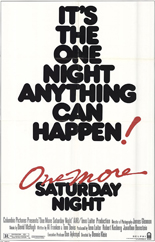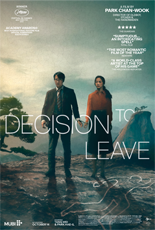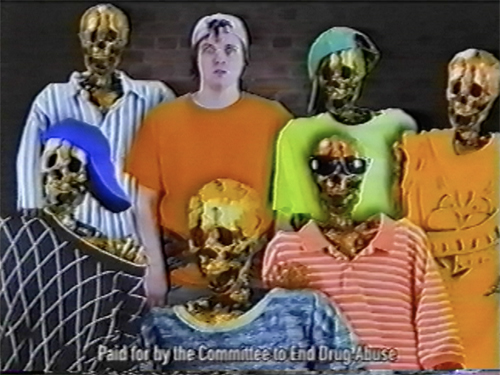
 Being shot in suburban Illinois, One More Saturday Night looks like it could take place one or two neighborhoods over from the shenanigans of John Hughes’ Sixteen Candles. The teen comedy could pass as an alternate-reality version, as it has direct counterparts for the Anthony Michael Hall and Justin Henry roles of, respectively, the geek aching to act cool and a precocious little brother. If only it thought to copy the laughs.
Being shot in suburban Illinois, One More Saturday Night looks like it could take place one or two neighborhoods over from the shenanigans of John Hughes’ Sixteen Candles. The teen comedy could pass as an alternate-reality version, as it has direct counterparts for the Anthony Michael Hall and Justin Henry roles of, respectively, the geek aching to act cool and a precocious little brother. If only it thought to copy the laughs.
Produced in part by Dan Aykroyd, this unofficial Saturday Night Live movie marks the first — and last — big-screen vehicle for the legendary SNL writing/performing team of Al Franken and Tom Davis. Having helped change television forever, they aimed for the pictures, scripting and starring as co-leads of the touring bar band Badmouth. Franken is the one with the ’fro; Davis is the one with the ’fro. Both mainly just wanna smoke pot and get laid; both front the film’s least engaging minutes.
Luckily, One More Saturday Night is an ensemble comedy with multiple overlapping storylines. A sad-sack widowed dad (the great Chelcie Ross, Major League) has his first date in 23 years. His eldest daughter (Nan Woods, In the Mood) plans to lose her virginity. His youngest daughter (Nina Siemaszko, Airheads) throws a wild party while babysitting an infant. And so on, diverging, converging and interweaving until the sun rises, bygones become bygones, and everyone enjoys communal flapjacks.
Franken and Davis’ script quickly sets up the chessboard for maximum madcap antics that fall just shy of wringing no more than a couple of overly gracious chuckles. Here’s the thing: That’s fine, because One More Saturday Night is exceedingly affable, which many funny ’80s comedies are not. Ross and Woods each get nice moments that can’t help but feel real and tender. The movie’s shortage of laughs may account for why it barely played theaters. It contains nary a pair of stolen underpants, act of nonconsensual sex nor Asian stereotype.
Actually, it has no Asians at all. But it does have Black people and, remarkably for the era, they’re not made the butt of the joke. —Rod Lott






 When a 60-year-old man is found dead at the bottom of a mountain, police detective Hae-joon Jang (Park Hae-il,
When a 60-year-old man is found dead at the bottom of a mountain, police detective Hae-joon Jang (Park Hae-il, 



 To date, the strongest argument against the multiverse concept as entertainment is
To date, the strongest argument against the multiverse concept as entertainment is 
 I imagine the real fun is the behind-the-scenes story, as Intermate originally came out as 2019’s slightly longer
I imagine the real fun is the behind-the-scenes story, as Intermate originally came out as 2019’s slightly longer